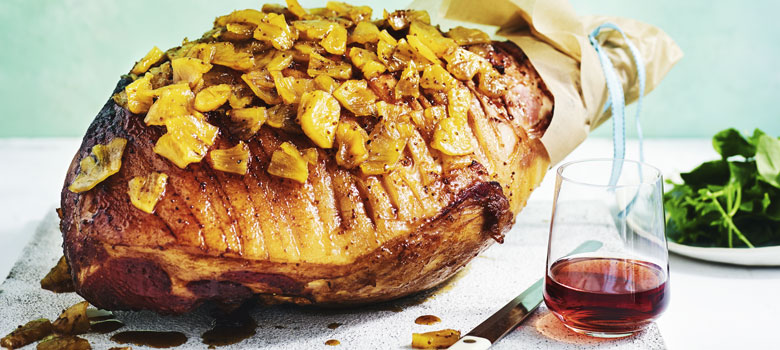
Food
Seasonal Pineapple
The pineapple leads a confused life. Neither a pine, nor an apple, this majestic tropical fruit is actually made up by a series of coalesced berries. Around the world, the pineapple is most often referred to by its genus, ananas, but in Australia, a pineapple can also be a $50 note (its yellow tones giving the note the nickname), while its big cousin has become a heritage-listed tourism destination. It’s a fruit that is as much at home in the fruit shop as it is in a can, and yet its presence remains contentious on a burger and totally fraught on a pizza.
There is natural order to the confusion, and the pineapple is one of the great examples of the Fibonacci sequence, a mathematic formula used to give order to the wild. Taking the scales of a pineapple, and counting diagonally, the pineapple’s berries will always have 13 berries, then 21, then 13 again. (The Fibonacci sequence is realised by adding the two proceeding numbers to get the next - 0+1=1; 1+1=2, 1+2=3, 2+3=5, 3+5=8, 5+8=13, 8+13=21 …). In the same way a four-leaf clover is a rarity, so too is a pineapple with 14 scales. (Incidentally, these Fibonacci numbers will also generally dictate the number of petals on a flower, with three, five and eight petals common, while four, six and seven are rare.)
The beauty of this fruit is not just skin deep – eaten fresh and sweet on a hot summer’s day, a pineapple is one of the best celebrations of the transition from spring to summer. The pineapple itself enjoys the heat too and is great cooked, with its natural sweetness exacerbated by the heat of a hot grill or open flame. Think of roasting it whole, baking it into an upside-down cake, or, of course, playing into the great pizza debate. Juiced, pineapples also make a great cocktail or granita and ferment well for kombucha.
pineapple prestige
A native to South and Central America, its arrival on European shores is credited to Christopher Columbus. According to folklore, it was a pineapple, speared on a post by the door, that was the sign of the merchant’s safe return home, also providing an invitation to visit, share the spoils of the tropics and listen to the tales of adventure.
Subsequently, this exoticism led to the pineapple becoming synonymous with luxury and, indeed, your rank in society. So much so, it was not unusual to rent a pineapple for your dinner party, to show you had your house in order. It was also not unusual for the pineapple to actually rot in the house, rather than being eaten. The things we do for prestige! It was as this symbol of hospitality that the pineapple subsequently found its place in architecture, sculptural reliefs and motifs around the world.
Eventually, as agriculture developed and new lands took hold of the pineapple, the fruit has found its way into many homes – perhaps now too many, with the seasonality of the fruit largely ignored for convenience of consumption at any time. The pineapple canning industry, developed in Hawaii at the turn of the twentieth century, and later pineapple juice, a by-product of the canning, took this tropical fruit to the masses.
Select and store
It takes almost three years for a pineapple to naturally reach maturity. It will never become any riper than it was when harvested – it will become softer, but not sweeter. Let your nose guide you; if you are arrested by a cloud of pineapple perfume in the fruit shop, you should stop, and you should buy.
If you are choosing between a few, pick them up and smell the underside for comparison – it should smell sweet, not vinegary or fermented. It will have nice green leaves and a firm shell, with a small amount of give. A pineapple is very perishable and, if it is stored at room temperature, it should be eaten within a couple days. If it is refrigerated, a pineapple can last for 5–7 days.
The easiest way to slice a pineapple is to cut off the base and leaves and then stand it on one end and cut away the skin in long slices, being careful to cut out the eyes of the scales. It can then be cut in half or into slices.
Pineapple loves
Ginger, chilli, salt, rum, spices, ham, bacon, mint, tropical fruits, rice (particularly sticky rice), pork, vinegar and, perhaps surprisingly, blue cheese.